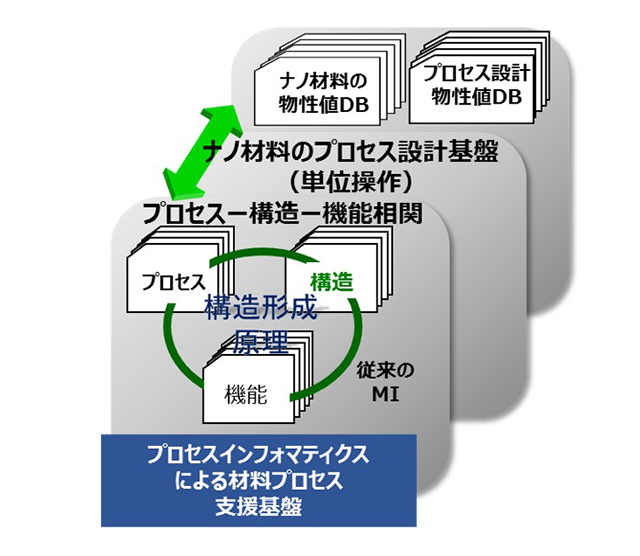Projects
Supercritical Nanomaterials Technology
Name
Tadafumi Adschiri
Distinguished Professor
The Advanced Institute for Materials Research (AIMR)
Outline of Research
In order to apply supercritical nanomaterials technology to various industrial fields, we will utilize our supercritical apparatus to carry out basic and application researches in collaboration with private companies. In addition to emphasizing joint research with corporate partners, we will promote large-scale projects based on this technology.
Research Purpose
By using the supercritical hydrothermal method to control the surface properties of nanoparticles through organic modification, we aim to improve the affinity between nanoparticles and polymers and to develop new materials based on its control. In addition, we will promote a process science project to establish a process design framework for nanomaterials (i.e., a process-structure-function relationship). Furthermore, we will develop a low-temperature reforming process using waste heat, based on the recent discovery of huge low-temperature oxygen storage capacity. These innovations will serve as the technological foundation for the creation of a CO2 zero-emission society.
Expected Effect
The main goal of the process science project is to build a nanomaterial process consultation center for industry, academia, and government. An industry–academia collaboration base equipped with a database and synthesis & analysis facilities will be established at the Material Solution Center (MaSC) to support developing nanomaterial processes in corporate companies. This will promote the commercialization of nanomaterials in various fields such as automobiles, green energy, power electronics, medicine, and construction materials. In Japan, businesses related to functional materials, including nanomaterials, are driving the economy. Therefore, we believe that existence of an industry–academia collaboration center that can resolve the problem in companies’ nanomaterial process has social significance. In addition, implementation of methane reforming, water splitting and waste plastic recycling driven by low-temperature waste heat will lead to a significant reduction in carbon dioxide emissions and other adverse environmental impacts.
Achievement
(1) Elucidation of the kinetics and reaction mechanism of organic modification using supercritical water, (2) Elucidation of the correlation between phase equilibrium and fluidic properties in nanoparticle-solvent systems, base on chemical engineering thermodynamics and computational science, and (3) topological analysis of nanoparticle aggregation structures and correlation with viscosity to elucidate principle of fluidic dynamics of nanofluids. Results have been presented in J Supercrit. Fluid, 110, 161-166 (2016); Applied Cat. A, 550, 284-294 (2018); Small, 14(42), 1802915/1 -8 (2018); Chem. Eng. Process, 142, 107531 (2019); Coll. Surf. A, (2019) among others.
Keywords
Supercritical water, organically modified nanoparticles, process-structure interaction
SDGs
Contact Information
TEL:+81-22-217-6321
E-mail address: tadafumi.ajiri.b1*tohoku.ac.jp
Please use @ instead of *.
HP URL: https://www.wpi-aimr.tohoku.ac.jp/ajiri_labo/


